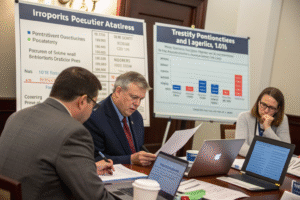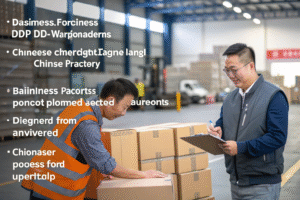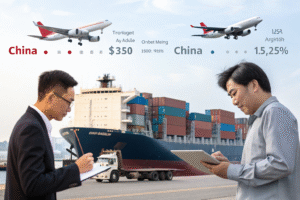You receive a shipping quote that looks great — until the final invoice arrives. Suddenly, there are surcharges, taxes, and fees you didn’t expect. Sound familiar?
Freight charges and fees include the base shipping cost plus a wide range of surcharges, handling, customs, and delivery expenses. Understanding each part helps you avoid surprises and manage your landed cost.
Whether you’re importing by sea, air, or rail, getting clarity on freight billing is key to smarter international trade. Let’s break it down.
Breakdown of common international freight charges
Shipping isn’t just about getting cargo from A to B. Every stage — from pickup to customs to delivery — involves different services and costs.
Common freight charges include base transport fees, terminal handling, fuel surcharges, documentation, customs clearance, and local delivery.

What are the main types of freight charges?
| Charge Type | Applies To | Description |
|---|---|---|
| Base Freight | Ocean/Air/Rail | The core transportation cost (port-to-port or airport-to-airport) |
| Origin Charges | All modes | Pickup, export customs, loading, and terminal handling |
| Destination Charges | All modes | Unloading, customs, terminal fees, local delivery |
| Documentation | All modes | Bills of lading, certificates, customs entries |
| Fuel & Surcharges | Sea/Air | BAF, EBS, CAF, FSC, depending on market rates |
| Duties & Taxes | All modes | Customs tariffs, VAT, import charges (often based on HS codes) |
At GeeseCargo, we show these items clearly on every quote — so you’re never left wondering why the final number changed.
What’s included in shipping quotes and invoices?
Not all freight quotes are created equal. Some include everything — others only cover port-to-port movement and leave you with surprise destination costs.
Shipping quotes can be all-in (door-to-door) or partial (port-to-port). It’s essential to know what’s included — and what isn’t — in your forwarder’s offer.
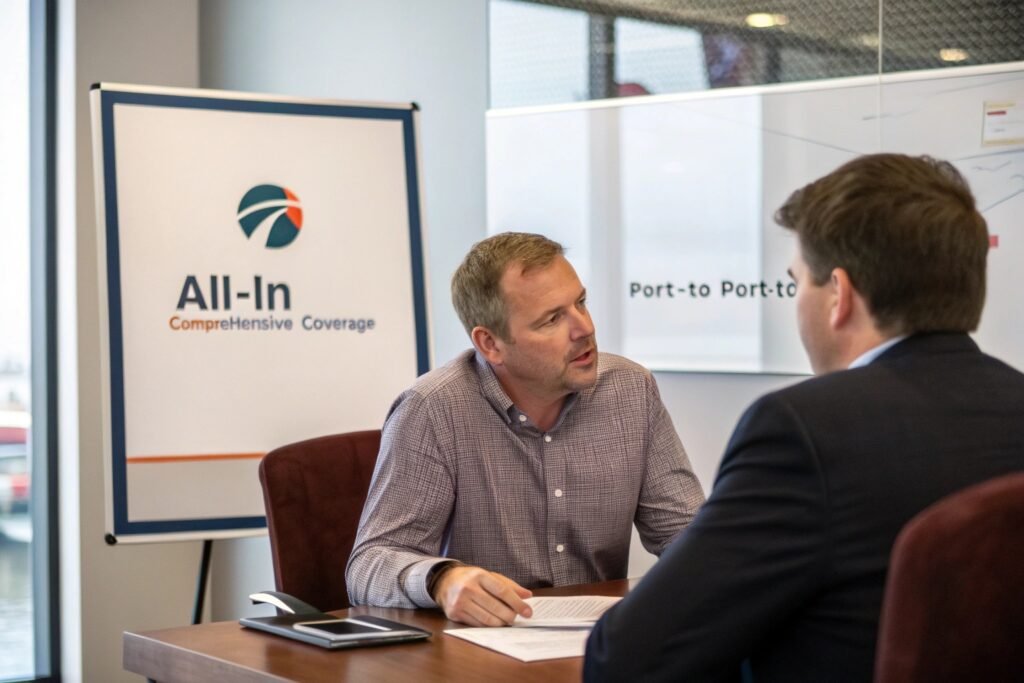
What should be included in a complete freight quote?
| Component | Should Be Included? |
|---|---|
| Freight (Sea, Air, Rail) | ✅ |
| Export declaration | ✅ |
| Port terminal fees | ✅ |
| Fuel surcharges | ✅ |
| Import customs clearance | ✅ (for DDP) |
| Duty and tax estimate | ✅ (for DDP) |
| Final-mile delivery | ✅ (for DDP or door-to-door service) |
| Insurance | Optional, but quoted separately |
We always clarify:
- Are you paying FOB, DDP, EXW, or CIF?
- Is destination delivery included?
- Who is responsible for customs clearance?
If you’re not sure — ask for a quote comparison with and without last-mile service.
Hidden fees to watch for in global logistics
Even a well-priced quote can become expensive if you don’t understand the hidden or conditional fees often excluded from initial pricing.
Common hidden fees in freight shipping include demurrage, detention, port congestion surcharges, document reissue fees, and customs inspection charges.
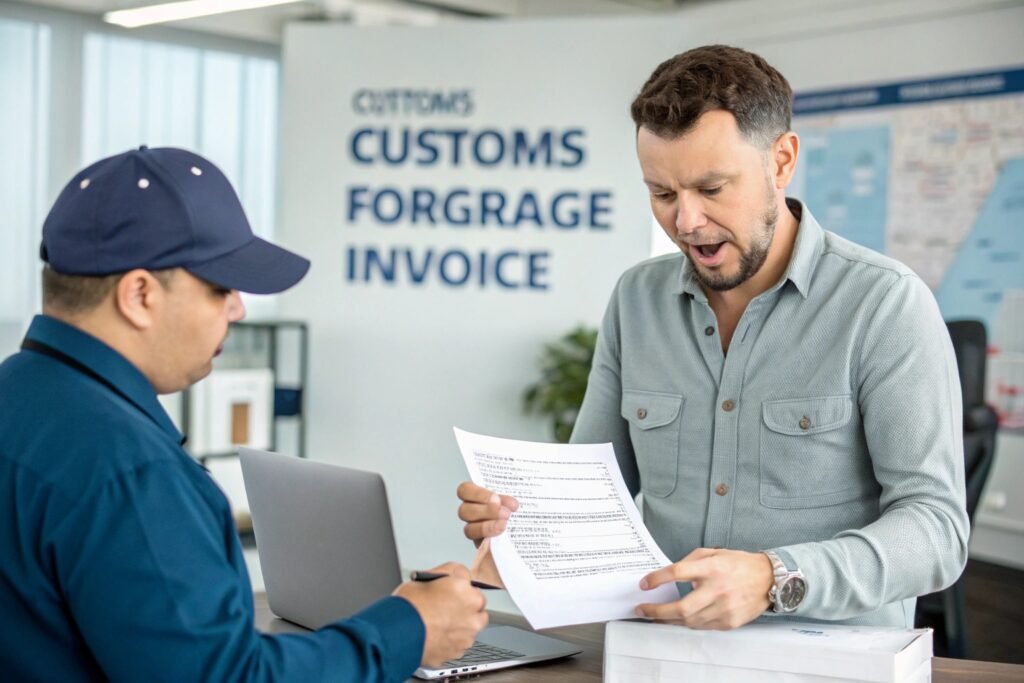
What fees are most commonly missed?
| Fee | When It Happens | Cost Range |
|---|---|---|
| Demurrage | Container left too long at port | $75–$200/day |
| Detention | Delay in returning empty container | $100–$150/day |
| Port Congestion Surcharge | During peak seasons or strikes | $150–$500/container |
| ISF Late Filing | Failure to file Importer Security Filing | $5,000 fine (USA) |
| Customs Re-inspection | If cargo is flagged for exam | $200–$800+ depending on type |
| Delivery Appointment Charges | Especially for Amazon or bonded warehouses | $50–$150 |
At GeeseCargo, we highlight all potential surcharges in our quote notes — and advise you in advance if a port is congested or customs inspections are trending up.
How to reduce hidden fees?
- Clear customs quickly (we recommend pre-clearance)
- Avoid last-minute booking during peak seasons
- Track container free time at ports and return promptly
- Use DDP if you want everything included under one rate
We also offer optional insurance against demurrage, which protects your budget if port delays are outside your control.
How to estimate your total landed shipping cost
Freight is only one piece of the puzzle. To know your true cost per unit, you need to add duties, taxes, insurance, inland delivery, and sometimes packaging or labeling fees.
Your landed cost is the total expense of moving goods from the factory in China to your warehouse — including all shipping, customs, and local handling charges.

How to calculate landed cost:
| Cost Element | Example Value |
|---|---|
| Product Cost (FOB Ningbo) | $10,000 |
| Sea Freight (40HQ) | $3,800 |
| Export + Origin Fees | $400 |
| Import Duties (5%) | $500 |
| U.S. Port Handling + Trucking | $800 |
| Customs Broker Fee | $120 |
| Insurance | $60 |
| Total Landed Cost | $15,680 |
This breaks down to $15.68/unit if shipping 1,000 units — not $10/unit as you may have assumed from the FOB price.
We provide landed cost calculators and per-unit forecasts to all GeeseCargo clients, making it easier to set prices and plan margins.
Should you use DDP for better clarity?
Yes — DDP includes:
- All freight costs
- Export + import clearance
- Duty + VAT
- Final-mile delivery
If you want full visibility and zero customs surprises, DDP is the best way to go.
Conclusion
Freight charges can be complex, but they don’t have to be confusing. When you understand each line item, ask the right questions, and partner with a transparent forwarder like GeeseCargo, you can take control of your shipping costs — and make smarter, more profitable decisions for your business.



